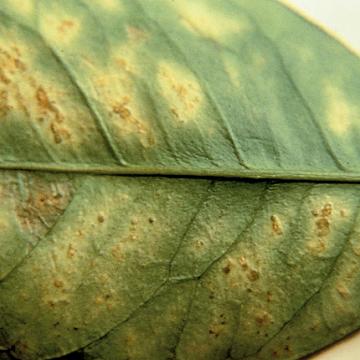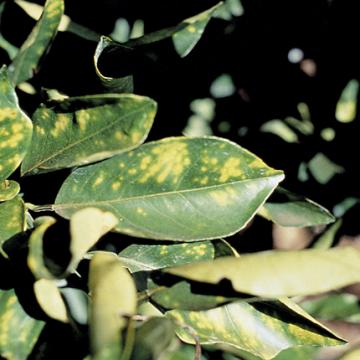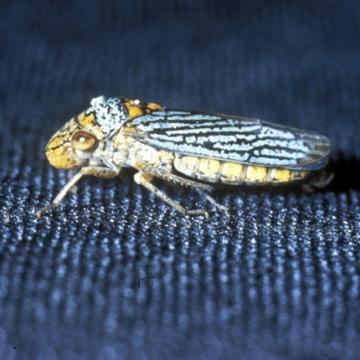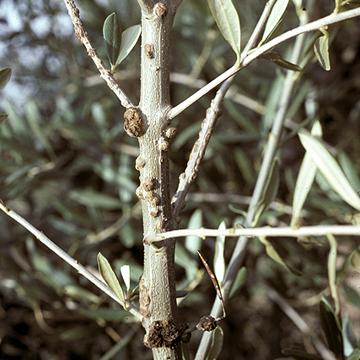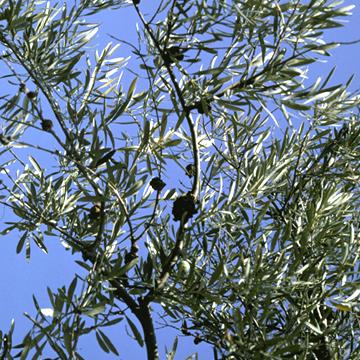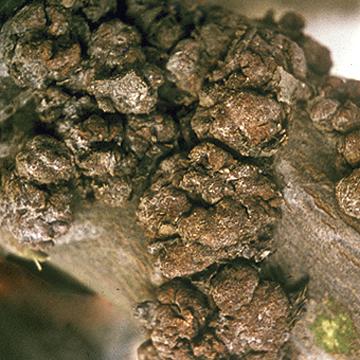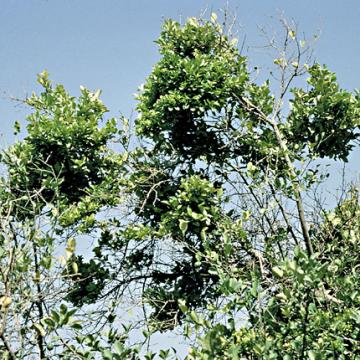DISEASE: Citrus variegated chlorosis
HOST: Citrus (sp. unknown)
Leaf with chlorosis in interveinal spaces and brown spots visible on lower leaf surface.
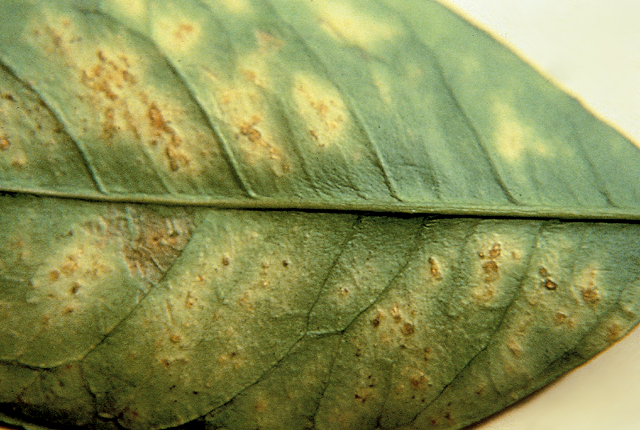
Citrus variegated chlorosis | Citrus (sp. unknown)
DISEASE: Citrus variegated chlorosis
HOST: Citrus (sp. unknown) (Citrus sp.)
PATHOGEN: Xylella fastidiosa
SOURCE: M. J. G. Beretta
DISEASE: Citrus variegated chlorosis
HOST: Citrus (sp. unknown)
Interveinal chlorosis on upper side of leaves.
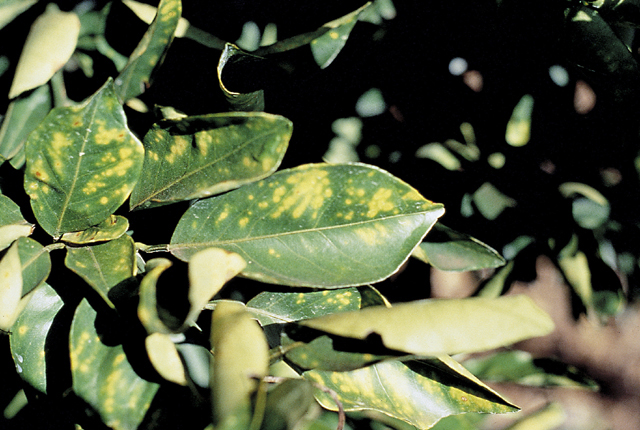
Citrus variegated chlorosis | Citrus (sp. unknown)
DISEASE: Citrus variegated chlorosis
HOST: Citrus (sp. unknown) (Citrus sp.)
PATHOGEN: Xylella fastidiosa
SOURCE: M. J. G. Beretta
DISEASE: Citrus variegated chlorosis
HOST: Citrus (sp. unknown)
Leafhopper (Oncometopia nigricans) vector of Xylella fastidiosa, which transmits citrus variegated chlorosis.
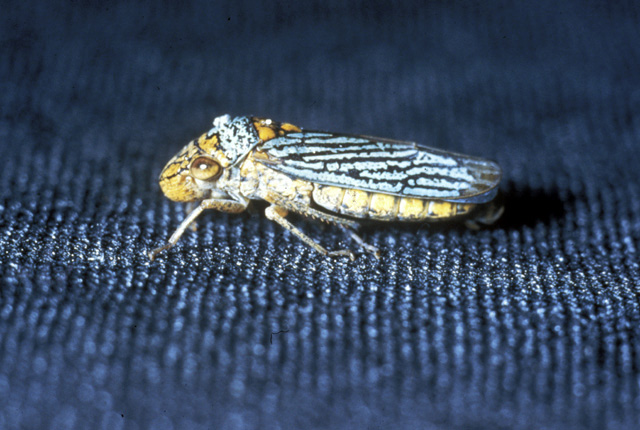
Citrus variegated chlorosis | Citrus (sp. unknown)
DISEASE: Citrus variegated chlorosis
HOST: Citrus (sp. unknown) (Citrus sp.)
PATHOGEN: Xylella fastidiosa
SOURCE: D. Hopkins
DISEASE: Olive knot
HOST: Olive
Multiple infections of young stems. The bacterium invades vascular tissues during certain times of the year and may be isolated from branches that appear healthy.
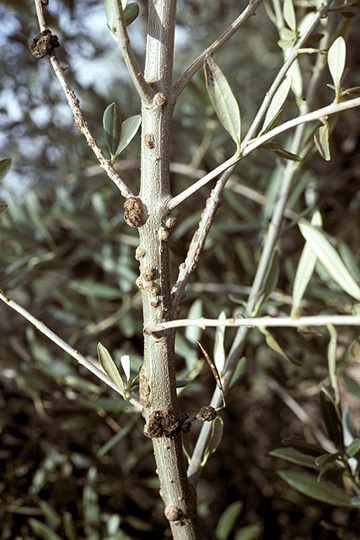
Olive knot | Olive
DISEASE: Olive knot
HOST: Olive (Olea europaea)
PATHOGEN: Pseudomonas savastanoi pv. savastanoi
SOURCE: M. Schroth
DISEASE: Olive knot
HOST: Olive
Tree with knots/galls on branches along with twig dieback, which is associated with knots. Fusarium and Diplodia spp. infect through knots and are thought to be main reason for dieback.
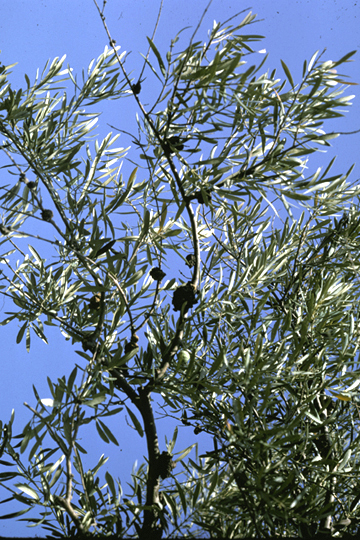
Olive knot | Olive
DISEASE: Olive knot
HOST: Olive (Olea europaea)
PATHOGEN: Pseudomonas savastanoi pv. savastanoi
SOURCE: M. Schroth
DISEASE: Olive knot
HOST: Olive
Multiple infections on olive branch. Knots at this stage begin to die from the outside in and are infected by several fungi.
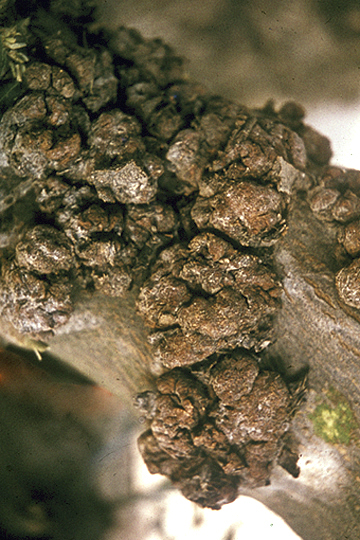
Olive knot | Olive
DISEASE: Olive knot
HOST: Olive (Olea europaea)
PATHOGEN: Pseudomonas savastanoi pv. savastanoi
SOURCE: M. Schroth
DISEASE: Witches'-broom
HOST: Citrus (Lime)
Lime tree with compact, small leaves (witches'-broom). Leaves on older brooms dry out and eventually drop, leaving dead, bare branches. There are no flowers or fruit on brooms.
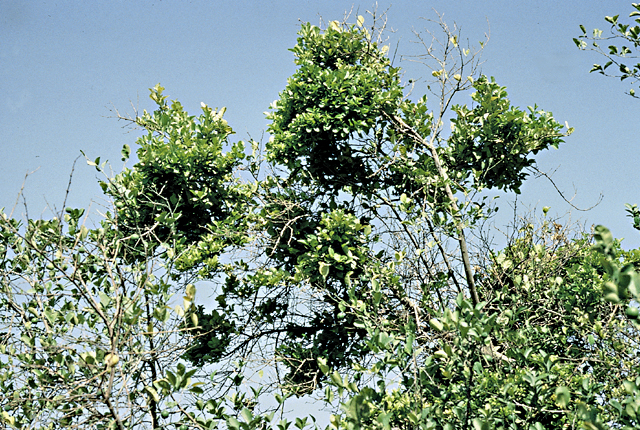
Witches'-broom | Citrus (Lime)
DISEASE: Witches'-broom
HOST: Citrus (Lime) (Citrus sp.)
PATHOGEN: 'Candidatus Phytoplasma aurantifolia'
PATHOGEN SYNONYM: Phytoplasma Peanut witches'-broom group
SOURCE: J. Bove, M. Garnier


